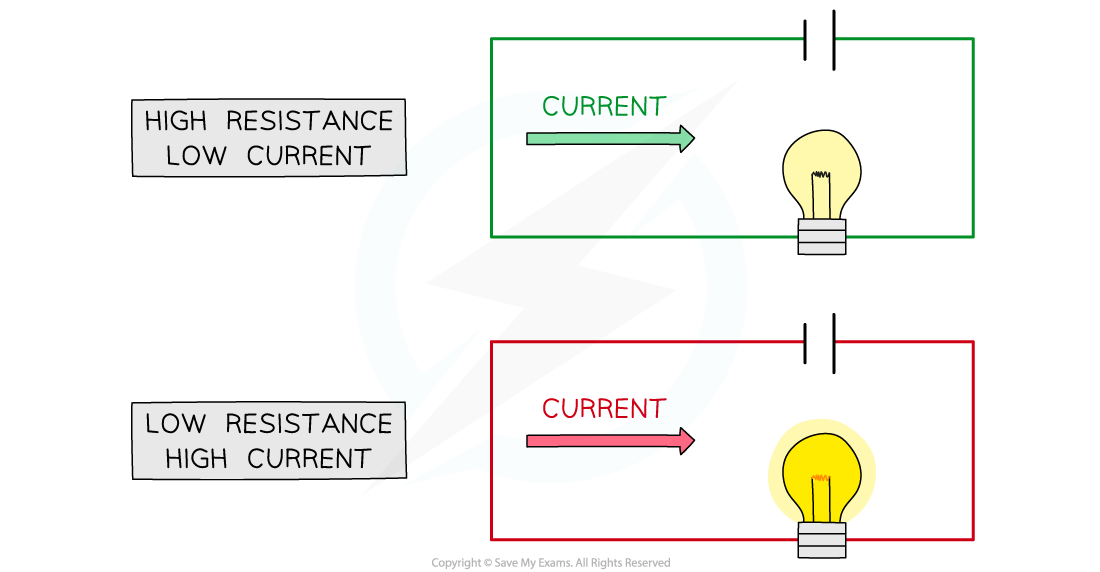Resistance (Cambridge (CIE) IGCSE Co-ordinated Sciences (Double Award)) : Revision Note
Did this video help you?
Resistance
Resistance is defined as:
The opposition to current
Resistance occurs because the free electrons flowing in the circuit (current) collide with the metal ions in the wire
These collisions slow down the electrons, or, in other words, resist their flow
The higher the resistance of a circuit, the lower the current
This means that good conductors have a low resistance and insulators have a high resistance
The resistance of a circuit can be increased by adding resistors (or variable resistors) to it
Every electrical component has a resistance, even wires
In exam questions, the resistance of the wires and batteries are assumed to be negligible
The effect of resistance on the current in a circuit

When a circuit has a high resistance, a lower current will flow, and vice versa
Ohm's law
Current,
, potential difference,
, and resistance,
, all affect one another
Changing any one of these in a circuit, changes all of them
Current and resistance are inversely proportional
If the resistance is doubled, current will halve
This relationship is described by the following equation, known as Ohm's law
Where
= resistance, measured in ohms (Ω)
= potential difference, measured in volts (V)
= current, measured in amperes or amps (A)
Worked Example
A 12 Ω resistor has a current of 0.3 A flowing through it.
Determine the potential difference across the resistor.
Answer:
Step 1: List the known quantities
Resistance,
Current,
Step 2: Write out the equation for Ohm's law and rearrange to make potential difference the subject
Step 3: Substitute in the known values to calculate
Current-voltage graphs
Extended tier only
The relationship between current and potential difference of a component can be shown on a current-voltage (I-V) graph
When the relationship between current and potential difference is linear:
the I-V graph is a straight line which passes through the origin
the resistance is constant
these are known as ohmic resistors
When the relationship between current and voltage is non-linear:
the I-V graph that is not a straight line
the resistance is not constant
these are known as non-ohmic resistors
Current-voltage (I-V) graph for a resistor and a filament lamp

Linear IV graphs are straight lines through the origin, indicating a constant resistance. Non-linear IV graphs are curved, indicating a variable resistance
Components with linear I-V graphs (ohmic resistors) include:
fixed resistors (at constant temperature)
wires (at constant temperature)
I-V graph for ohmic conductors
The relationship between current and voltage for a wire or fixed resistor is linear, or directly proportional, which means
the IV graph is a straight line, so voltage and current increase (or decrease) by the same amount
the slope of the graph is constant, so resistance is constant
I-V graph for a a wire of fixed resistor

The current is directly proportional to the potential difference (voltage) as the graph is a straight line through the origin
Examiner Tips and Tricks
In your IGCSE exam, you could be asked to recognise, sketch or explain the I-V graph for a wire or fixed resistor (ohmic conductors), but you do not need to know about the I-V graphs for a filament lamp or a diode.
Did this video help you?

You've read 0 of your 5 free revision notes this week
Sign up now. It’s free!
Did this page help you?
